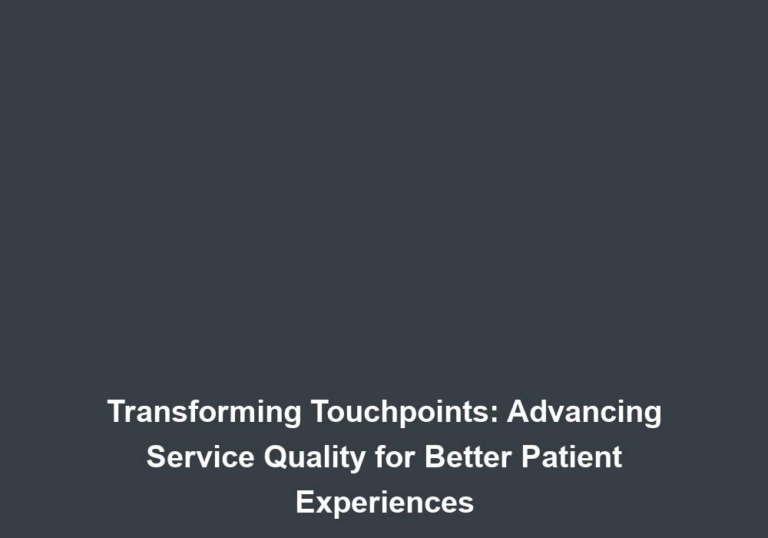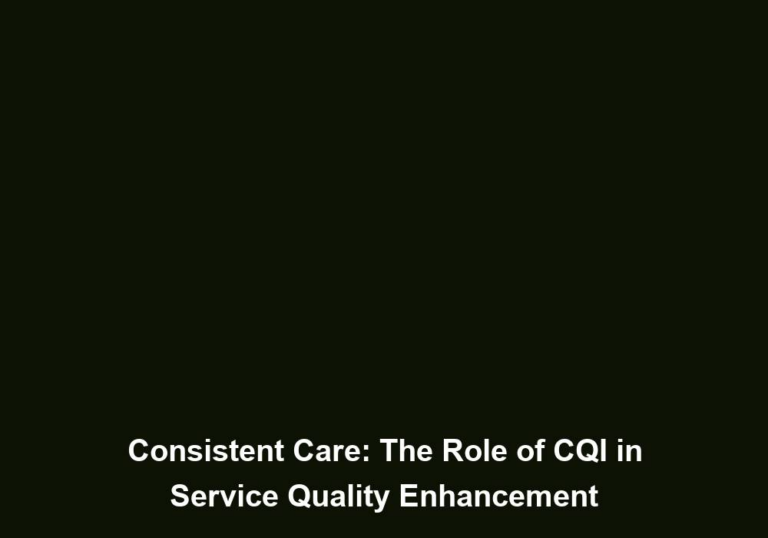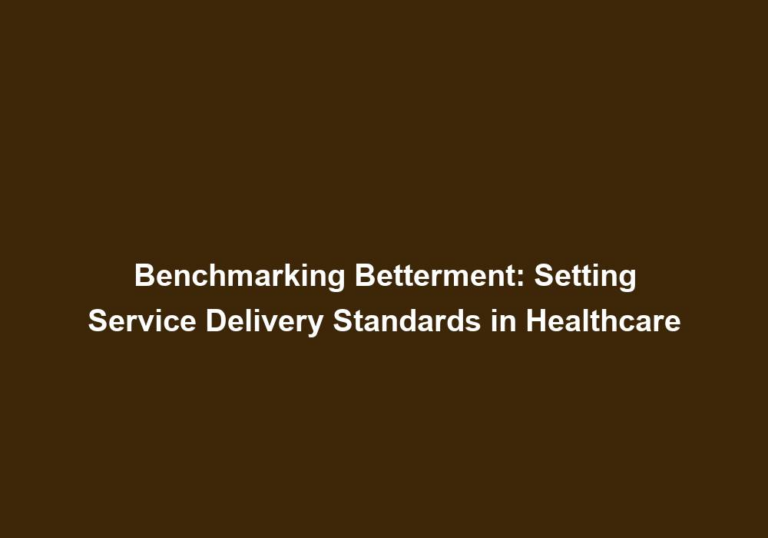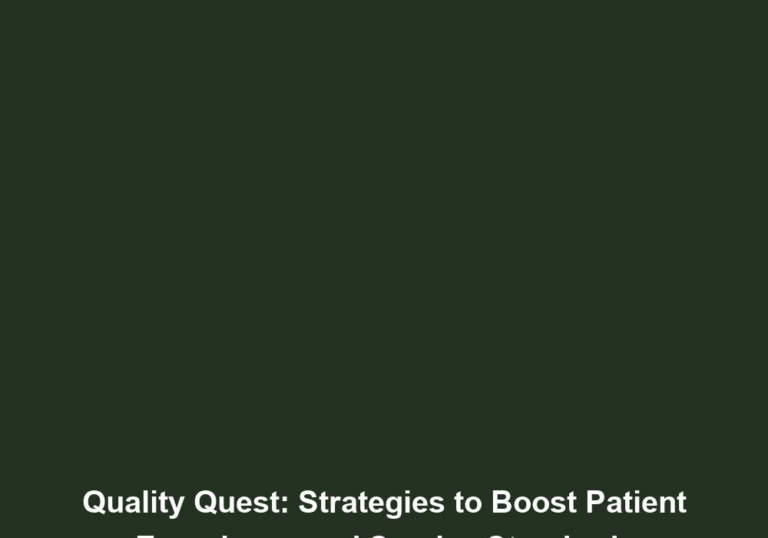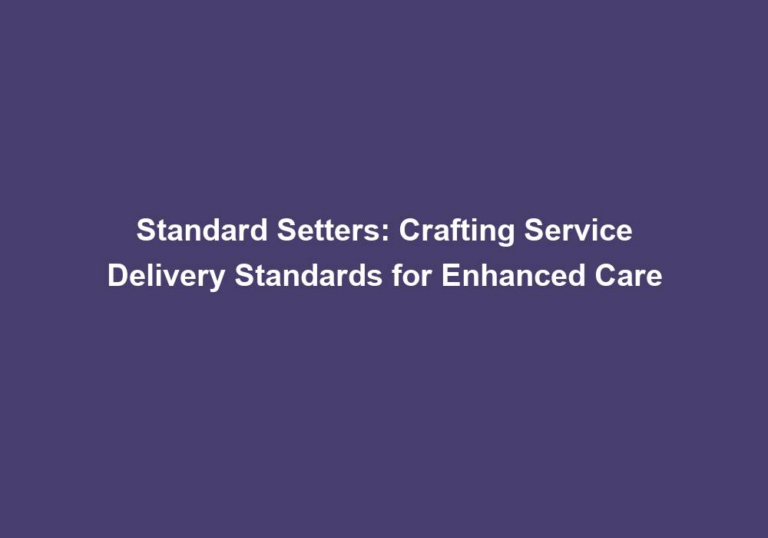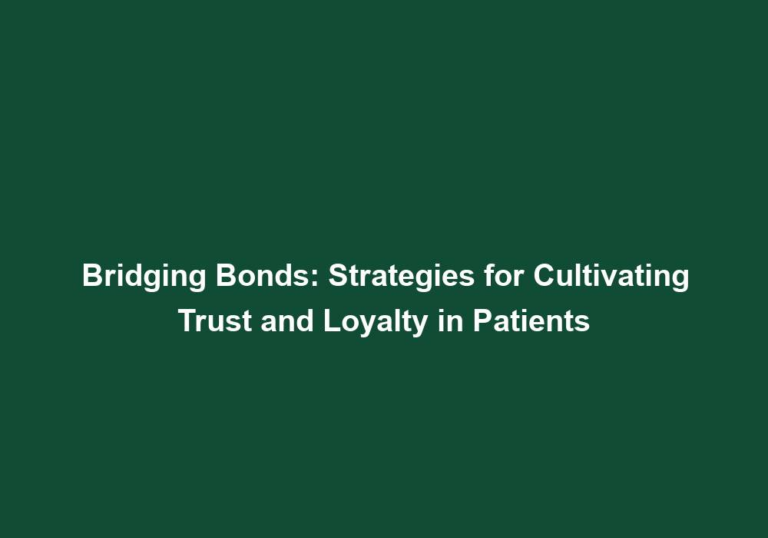Evolving Excellence: Embracing Continuous Quality Improvement (CQI) in Healthcare
In the fast-paced and ever-evolving field of healthcare, continuous quality improvement (CQI) plays a crucial role in ensuring the delivery of excellent and efficient patient care. By embracing CQI principles, healthcare organizations can adapt to changing circumstances, identify areas for improvement, and implement strategies to enhance the overall quality of healthcare services.
The Importance of Continuous Quality Improvement
Continuous quality improvement is a systematic and ongoing approach that focuses on achieving excellence in healthcare through a cycle of planning, implementing, evaluating, and refining processes. It emphasizes the need for continuous learning and improvement, enabling healthcare providers to respond effectively to the dynamic nature of healthcare delivery.
Enhancing Patient Outcomes
At the core of continuous quality improvement is the desire to enhance patient outcomes. By monitoring key performance indicators (KPIs) and regularly evaluating processes, healthcare organizations can identify gaps, inefficiencies, and potential risks that may compromise patient care. Through the implementation of CQI initiatives, such as standardized protocols, evidence-based practices, and interdisciplinary collaboration, healthcare providers can optimize patient outcomes, reduce medical errors, and improve patient satisfaction.
Some ways in which continuous quality improvement enhances patient outcomes include:
-
Standardized protocols: By developing and implementing standardized protocols, healthcare organizations can ensure consistency in patient care. These protocols outline best practices and guidelines that healthcare professionals can follow to provide high-quality care.
-
Evidence-based practices: Continuous quality improvement encourages healthcare providers to stay updated with the latest research and evidence-based practices. By incorporating evidence-based practices into their workflows, healthcare organizations can improve patient outcomes and reduce variations in care.
-
Interdisciplinary collaboration: Collaboration among healthcare professionals from different disciplines improves patient outcomes by facilitating holistic care. By working together, healthcare teams can leverage their respective expertise to provide comprehensive and coordinated care.
Strengthening Organizational Performance
Continuous quality improvement not only benefits patients but also strengthens organizational performance. By fostering a culture of quality and accountability, healthcare organizations can streamline operations, reduce costs, and enhance staff satisfaction and engagement. CQI frameworks, such as Lean Six Sigma, enable healthcare providers to identify and eliminate waste, enhance productivity, and optimize resource allocation. Through data-driven decision-making and ongoing performance monitoring, organizations can achieve operational excellence and maintain a competitive edge in the healthcare market.
Some key benefits of continuous quality improvement for organizational performance include:
-
Streamlined operations: By continuously evaluating processes and identifying areas for improvement, healthcare organizations can streamline their operations. This results in increased efficiency, reduced waste, and improved resource utilization.
-
Cost reduction: Through the elimination of waste and inefficiencies, continuous quality improvement can lead to cost reduction in healthcare organizations. By optimizing resource allocation and implementing cost-effective strategies, organizations can allocate their resources more efficiently.
-
Staff satisfaction and engagement: A culture of quality improvement fosters employee satisfaction and engagement. When healthcare professionals see the positive impact of their work on patient outcomes and organizational performance, they are more motivated and satisfied with their jobs.
The Continuous Quality Improvement Process
Implementing continuous quality improvement in healthcare involves a systematic process that encompasses various stages. Let’s explore these stages in detail:
1. Assessment and Planning
The first step in embracing CQI is to assess the current state of healthcare delivery within the organization. This involves analyzing processes, policies, and procedures, as well as gathering relevant data and feedback from stakeholders. By conducting a thorough assessment, healthcare providers can identify strengths, weaknesses, and opportunities for improvement.
During the assessment and planning stage, healthcare organizations should consider the following:
- Conducting a comprehensive review of existing processes and workflows to identify areas for improvement.
- Engaging stakeholders, including healthcare professionals, administrators, and patients, to gather valuable feedback and insights.
- Utilizing data analytics to identify trends, patterns, and areas of concern.
- Setting clear goals and objectives that align with the organization’s mission, vision, and values.
2. Implementation
Once the CQI plan is established, the next step is to implement the identified strategies and interventions. This may involve changes to workflows, training programs, or the adoption of new technologies. Effective communication and collaboration among healthcare professionals are crucial during this stage to ensure seamless implementation and minimize resistance to change.
Key considerations during the implementation stage include:
- Developing a clear implementation plan with defined timelines and responsibilities.
- Providing adequate training and support to healthcare professionals to ensure they are prepared for the changes.
- Communicating the purpose and benefits of the CQI initiatives to all stakeholders to gain their buy-in and support.
- Monitoring the implementation progress and addressing any challenges or barriers that arise.
3. Measurement and Evaluation
To track progress and evaluate the effectiveness of implemented changes, healthcare organizations must establish measurable indicators and collect relevant data. These indicators can include clinical outcomes, patient satisfaction scores, staff productivity, and adherence to best practices.
During the measurement and evaluation stage, healthcare organizations should:
- Define key performance indicators (KPIs) that align with their goals and objectives.
- Implement systems to collect and analyze data, ensuring data integrity and accuracy.
- Regularly review and analyze the collected data to identify trends, patterns, and areas of improvement.
- Compare the data against established benchmarks or industry standards to assess performance.
4. Refinement and Sustainability
Continuous quality improvement is an ongoing process that requires constant refinement and adjustment. Based on the evaluation results, healthcare organizations should identify opportunities for further improvement and adjust their strategies accordingly. This may involve revisiting the CQI plan, modifying interventions, or implementing new initiatives to address identified gaps.
To ensure the sustainability of continuous quality improvement efforts, healthcare organizations should consider:
- Establishing a feedback loop to continuously gather feedback from stakeholders and incorporate their insights into the improvement process.
- Providing ongoing training and education opportunities to healthcare professionals to enhance their knowledge and skills.
- Encouraging a culture of learning and continuous improvement by recognizing and celebrating achievements and sharing best practices.
- Regularly reviewing and updating the CQI plan to align with evolving organizational needs and industry trends.
Best Practices in Embracing Continuous Quality Improvement
To maximize the benefits of continuous quality improvement in healthcare, organizations should consider the following best practices:
-
Leadership Commitment: Strong leadership support is essential for successfully implementing and sustaining CQI initiatives. Leaders should champion the importance of quality improvement, allocate necessary resources, and actively participate in the process.
-
Data-Driven Decision Making: CQI efforts should be guided by reliable data and evidence. Healthcare organizations should invest in robust data collection and analysis systems to inform decision-making and drive improvement.
-
Interdisciplinary Collaboration: Collaboration among healthcare professionals from different disciplines fosters diversity of thought and promotes holistic problem-solving. By involving all stakeholders, including clinicians, administrators, and support staff, organizations can develop comprehensive solutions and facilitate buy-in.
-
Continuous Learning and Training: Providing ongoing education and training opportunities to healthcare professionals ensures that they are equipped with the latest knowledge and skills to drive quality improvement. Training programs should cover CQI methodologies, data analysis, and change management.
-
Patient Engagement: Involving patients in the quality improvement process enhances patient-centered care. Healthcare organizations should seek patient feedback, incorporate patient preferences, and actively involve patients in shared decision-making.
Conclusion
Embracing continuous quality improvement in healthcare is vital for ensuring excellence in patient care and organizational performance. By implementing a systematic and ongoing process of assessment, planning, implementation, measurement, evaluation, refinement, and sustainability, healthcare organizations can adapt to evolving challenges and continuously enhance the quality of their services. It is through the collective efforts of committed leadership, data-driven decision-making, interdisciplinary collaboration, and a strong culture of learning that the healthcare industry can evolve towards excellence in patient care.


